How to print a Word document
Printing a Word document is as straightforward as opening your doc in Microsoft Word or Google Docs, clicking on “File” and then selecting “Print” in the dropdown that appears.
We’ll go through it step-by-step below.
Most documents today are dematerialized — even official documents such as contracts or invoices — and can be signed with an eSignature software tool quickly and conveniently.
However, sometimes you might still need to print a Word document the old-fashioned way.
In this short article, we’ll cover how to do it natively in Word as well as via Google Docs if working in Google Drive is more your jam.
How to print a Word document: A step-by-step guide
If you’d like to print a Word document, you need to make sure your printer is connected to your computer and then follow those steps:
1. Open the document in Word or in Google Docs
The first step is to open your document in Microsoft Word.
Alternatively, if you don’t have Microsoft Office installed on your computer, you can use Google Docs to open and print any Word file in .doc or .docx format.
Similarly, if you want to print an Excel document, you can either use Microsoft Excel or Google Sheets to open it.
2. Click on File > Print
If you’re using Microsoft Word, click the File tab (in the upper left corner, from where you also save a document):
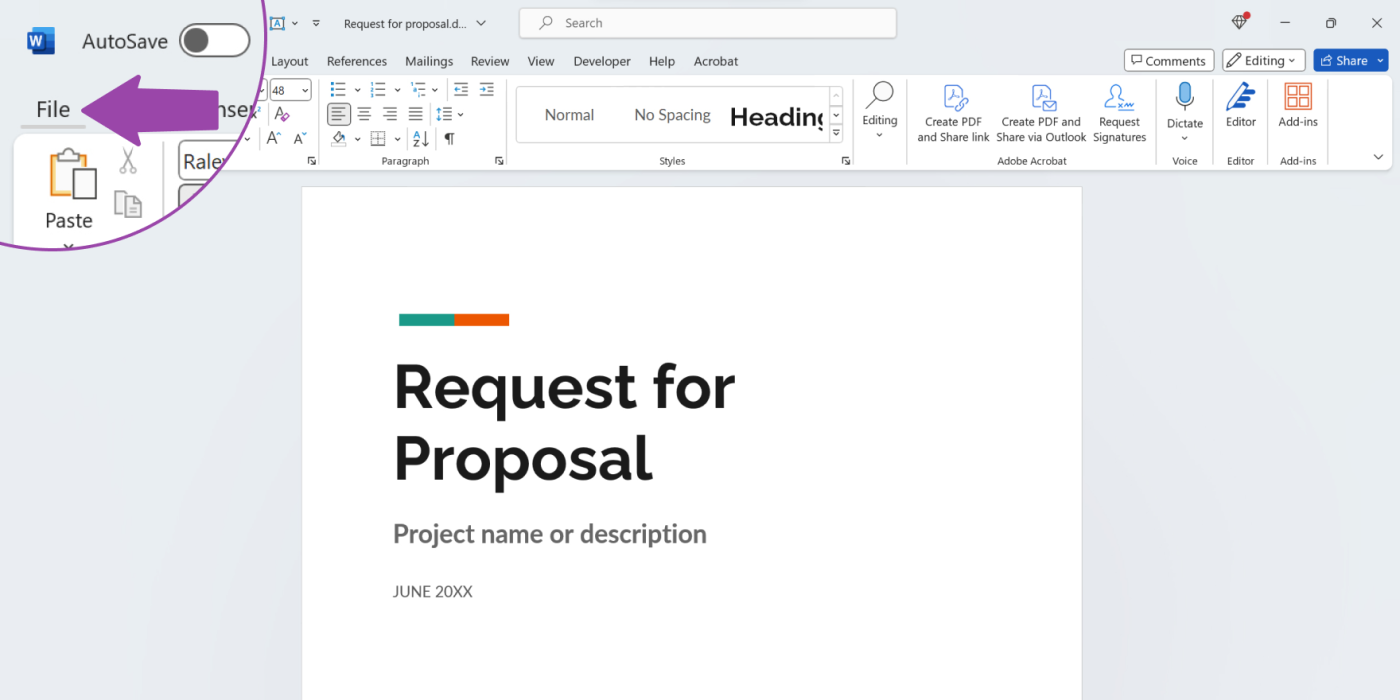
Then, click on Print:
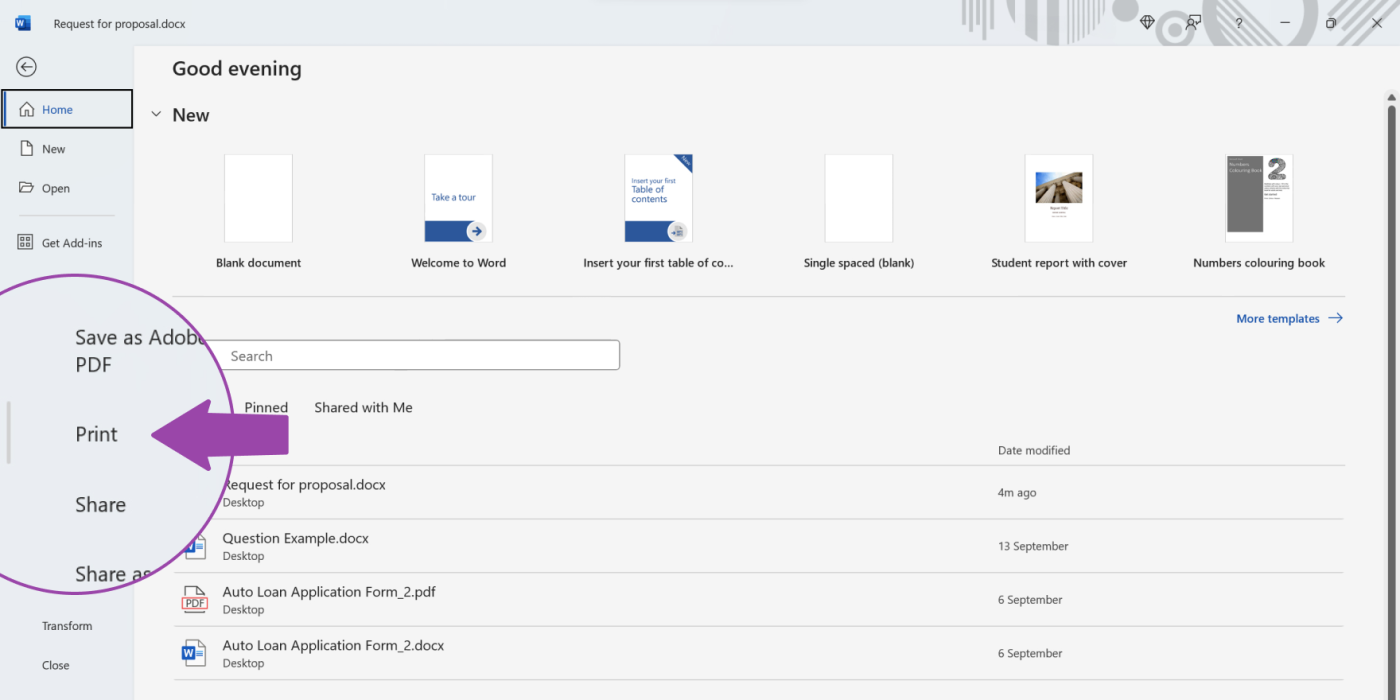
If you’re using Google Docs, click File and scroll down to Print (or use the down arrow to navigate to it):
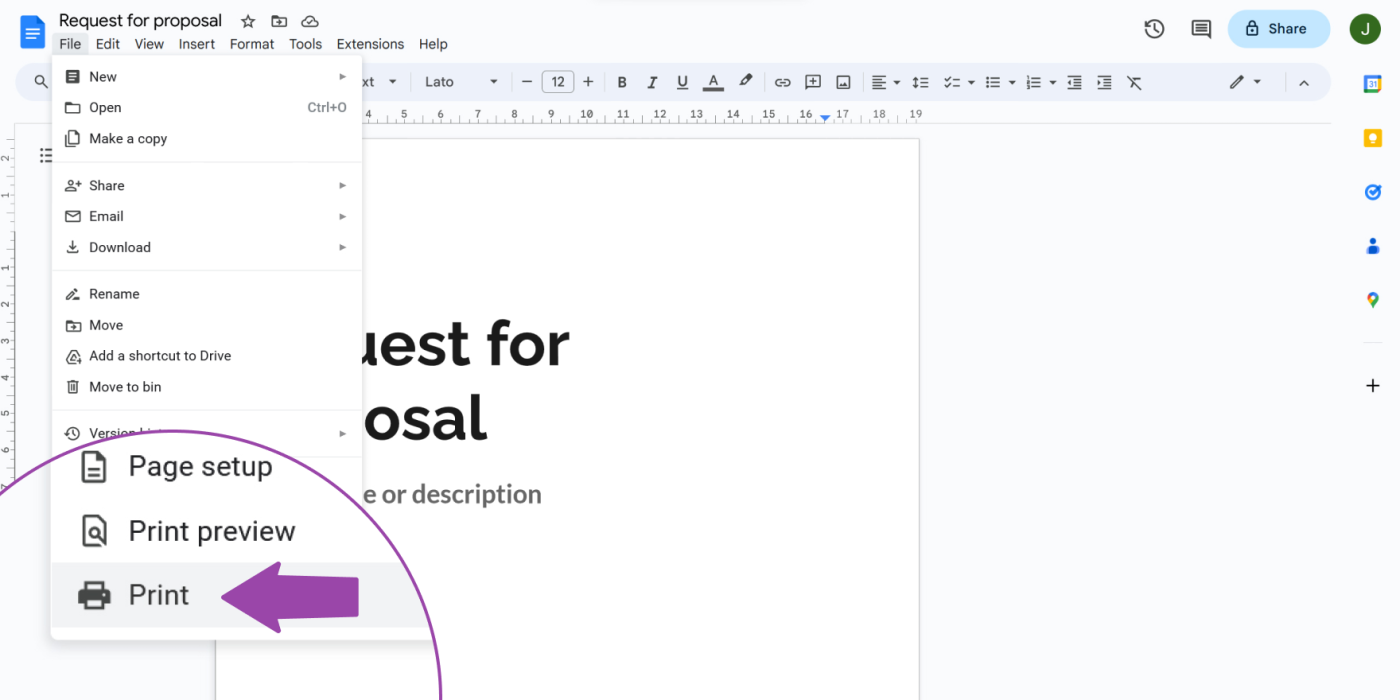
Alternatively, you can use the following shortcuts in Word and Google Docs:
- For Windows: Press Ctrl + P
- For Mac: Press Command + P
3. Check the print preview
Next, you’ll see a preview of the document you wish to print.
Here’s what this looks like in Word:
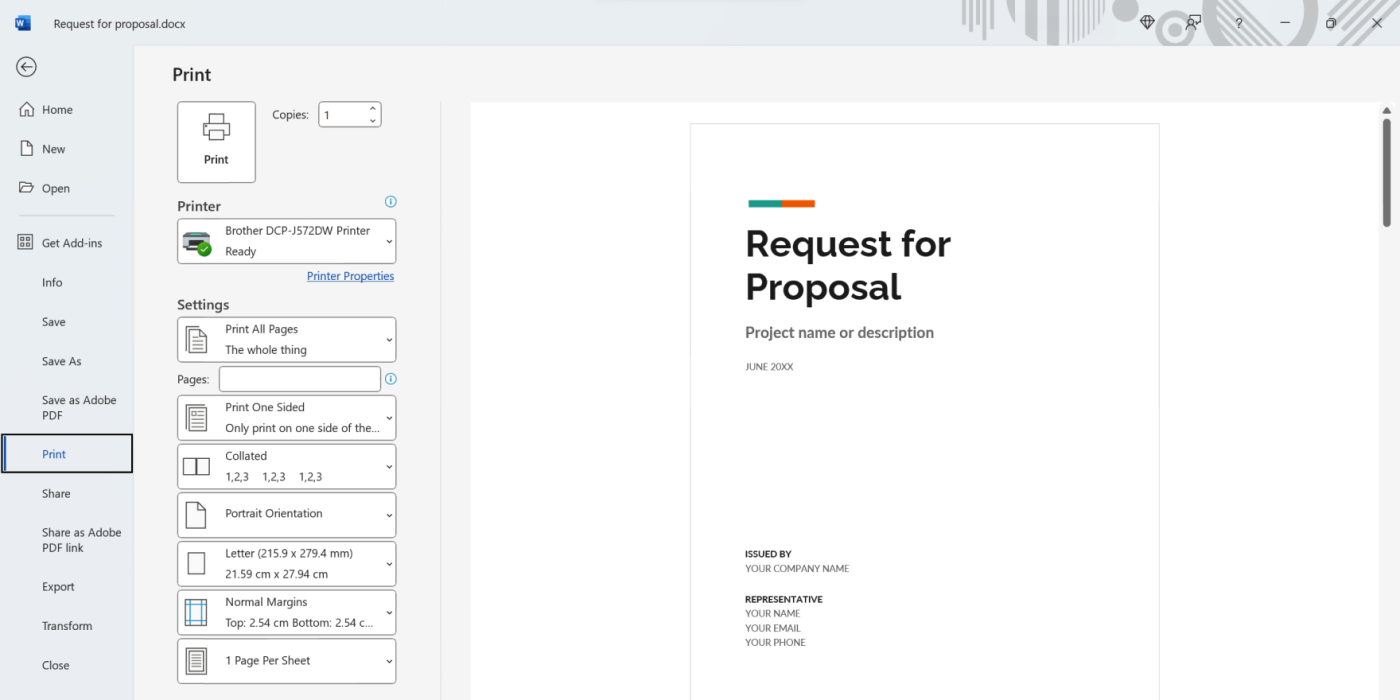
And here’s how it looks like in Google Docs:
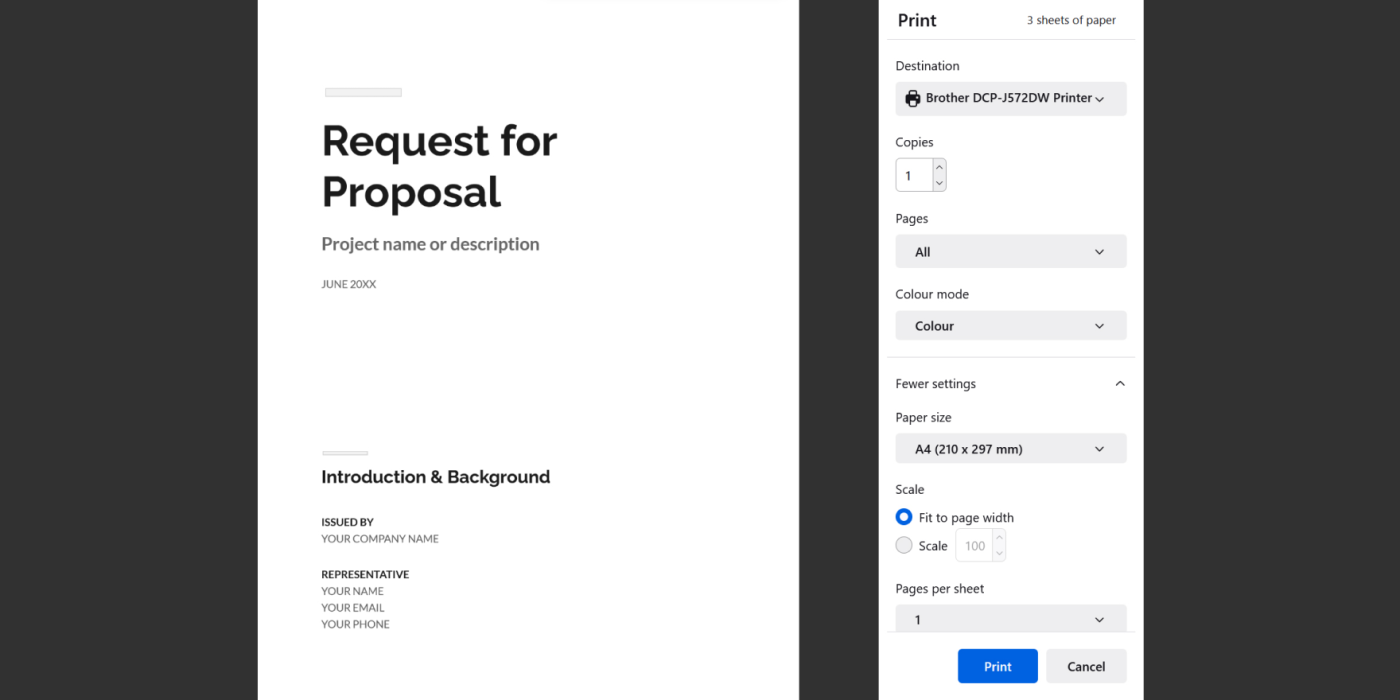
4. Choose the printer and the right printing options
Next, you need to select a printer from the drop down menu (in case your computer is connected to several) and choose the right printing settings.
Here’s what the different fields in Word mean:
| Setting | Explanation |
|---|---|
| Number of copies | Select the number of copies you need to print. By default, that number is 1. |
| Print range | Use this field to define which pages of the document to print. You can select “Print all pages” to print the entire document, “Print selection” to print selected text, “Print current page” to print the page you’re previewing, and “Custom print,” where you can select page ranges. |
| Pages | If you use the last option from the previous field, you can select specific pages or ranges to print. Use a comma between numbers. |
| Print one sided / Print both sides | Select whether to print on both sides of the paper or only one side. |
| Collated / Uncollated | If printing multiple copies of a document, “collated” means each copy will be printed in order (1, 2, 3), while “uncollated” means each page will be printed multiple times first (1, 1, 1, 2, 2, 2, and so on). |
| Orientation | Select print orientation of the paper. Portrait is vertical, landscape is horizontal. |
| Paper size | Choose the size of the paper you’re printing on. |
| Margins | Select the size of the non-printable space around the edge of the paper (normal, narrow, moderate, wide, mirrored). |
| Pages per sheet | The number of document pages that will be printed on each sheet of paper. |
In Advanced settings you can choose whether you’d like to print in color or in black and white, print background images, print hidden text, and more.
The settings in Google Docs look similar:

5. Print
Next, hit that Print button.
And that’s it! Your document is now printed.
Is there a better way to manage documents than to print them?
You now know how to easily print Word documents in Microsoft Word and Google Docs.
But is printing always necessary?
You don’t always need to print documents, even when signing official and legally binding docs, such as contracts, non-disclosure agreements, affidavits, quotes, and more.
In fact, all documents needed to operate a business nowadays can be signed electronically if you use a contract management solution like PandaDoc.
Using the PandaDoc platform:
- All parties can sign a document on any device
- See all updates in real time
- Act at the right time to strengthen business relationships
- Store and retrieve all documents safely and securely (which is much easier to do than scan them, name them correctly, and store them in folders)
And for occasions when you’re required to send a doc as a fax, we’ve got you covered as well: simply drag and drop a PDF into PandaDoc’s online fax — no need to dust off that printer or hunt down a fax machine!
Among the many perks of going electronic is the good news is that eSignatures are legally binding and can hold up in court.
Printing might still be necessary in rare cases — for example, if you want to proofread a document on paper or need to carry a visa application form with you when landing in a new country — but the modern way of doing business is mostly dematerialized.
If you’d like to try out PandaDoc and see for yourself how much easier it can be to manage your documents, you can sign up for a 14-day trial.
Author

